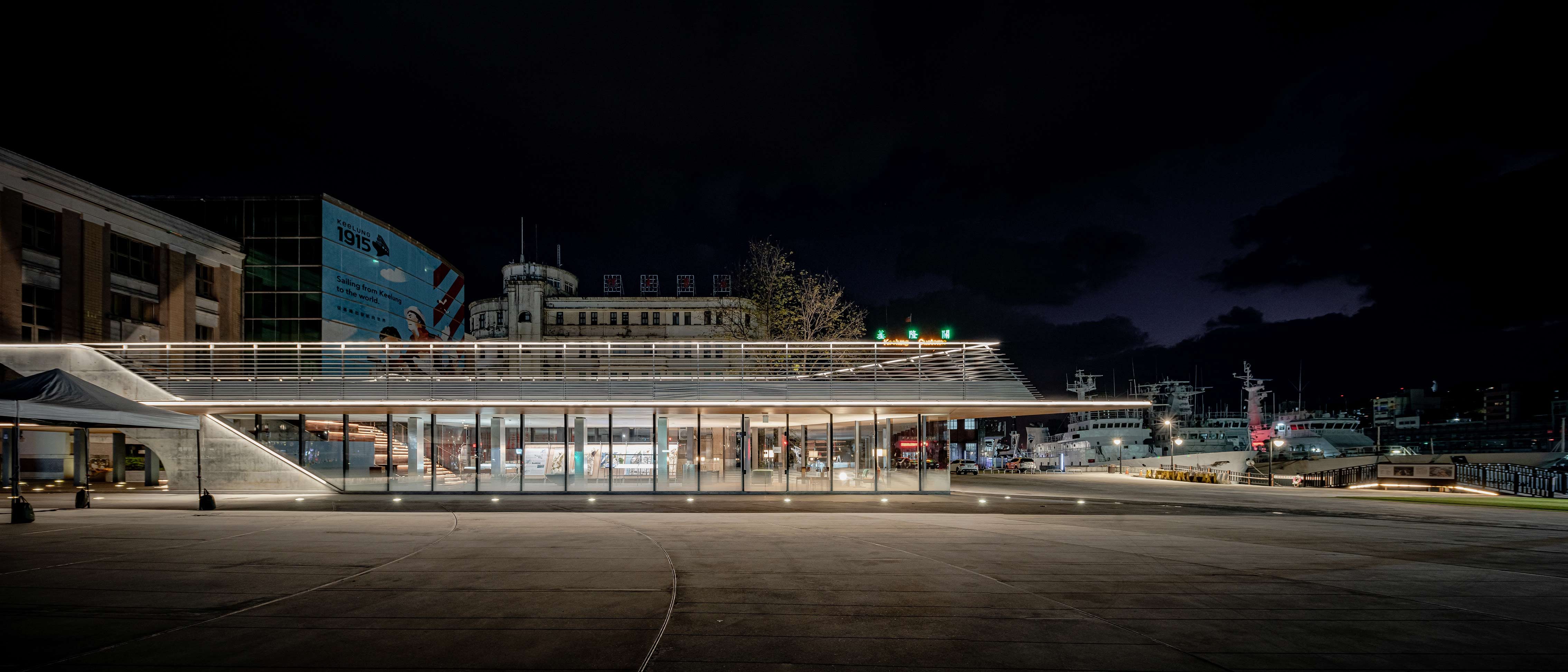廣場PLAZA
基隆國門廣場的挑戰在試圖捕捉基隆的「時代精神Zeitgeist」,藉由公共廣場來定義屬於這個世代的時代精神,同時運用這個場域創造開啟城市再造發展的起點。
零公里KM0
基隆曾經是臺灣最重要的海港,山城地理限制腹地擴張,進而妨礙其保持物流優勢地位的能力。在過去的30年中,基隆港競爭力降低使得港區核心都市區跟著衰落,發展力道往市郊周邊分散,而未集中在核心區主要的市民空間和公共基礎設施上。近年來基隆努力的翻轉這樣的規劃邏輯,首先以Vicente Guallart與仲觀聯合建築師事務所的海洋廣場(2009)開啟港口濱水區再生願景的序曲,最近完成的基隆火車站南北兩站將結合未來城際轉運站和更新的郵輪碼頭,有效地將聯外中長程公共交通運輸系統整合於海洋廣場以西的交通轉運廊道。
零廣場ZERO PLAZA
我們認知到身處於必須要做出重大變革的時節點,這個改變不僅要面對全球環境變遷,並且要對當下文化跟經濟的復興提出適切的回應。我們提出一個概念架構、提出一個新的社會契約,就像Noveschi在田園廣場所做的一樣。「O」是一個能量豐沃的原點,透過這個原點展開這個港灣再生計劃的各個面域;「O」代表我們的島嶼、也代表我們與世界連結的門戶;「O」展現清澄的創造力、也創生清淨的養分;「O」代表我們的起點、同時體現我們相對無窮的潛力。
這個基地的公共性提供了一個機會思考臺灣在二十一世紀需要公共空間扮演什麼樣的角色。這個濱水的基地提醒我們海平面的高度不是古今一轍,正如零不是一個絕對值,而是一個相對的變數。在這個相對潛力的概念下,「O」零廣場成為讓人們互動交換百年文化、本土傳統、當代實踐與尖端技術的公共平台,廣場試圖涵納人們對於集結的多維面向可能性,鋪裝單元創造出繽紛的圖樣雲團巧妙的轉化尺度及高程變化,構築屬於臺灣的況味。在便攜式科技發達資訊即時流通的時代,廣場空間設計演繹當代霧粒化的社會狀態,賦權且包容多元群體。「O」零廣場代表了一個對話空間,實踐社會最大化的共同願景,大尺度的都市地景成為在地創造力蓬發的再生基地。
PLAZA
The fundamental challenge in designing Keelung’s new Gateway Plaza lies in the problem of both attempting to capture the Zeitgeist, the spirit of the time, while effectively inaugurating the ground for a collective project of urban [re]development. This has been the case with some of the most representative public squares throughout history and continues to be so in contemporary public space projects. Siena’s Piazza del Campo, dating back to the 14th century, serves as an iconic historical precedent to this premise.
KM0
If Keelung was once the most important seaport in Taiwan, orographic constraints limiting its expansion have thwarted its ability to maintain a logistical advantage. The port’s decline has, for the past 30 years, intoxicated the core of a city that has continued to decay while new development has tended to disperse out rather than concentrate around its principal civic spaces and public infrastructures. Keelung City’s planning efforts to counter this logic, following a vision for the regeneration of the port’s waterfront, began to come to fruition with Vicente Guallart’s Maritime Plaza (2009). Building upon this project’s success, the recently completed north and south railway stations will couple with a future streamlined inter-city bus station and new ferry terminals, effectively consolidating all mass transit along a single band to the western side of the Maritime Plaza.
ZERO PLAZA
At a time when we must realize the need to effect big change, change not only in view of trying to remedy global environmental crises, but also change directed toward ensuring our short-term cultural and economic survival, we call for an organizational concept that renews the social contract, much like the Noveschi did at the Piazza del Campo. ‘O’ becomes the fertile concept through which we draw a diagram that informs the multiple spheres at which the project aspires to operate. ‘O’ stands for island-nation and for global gateway; ‘O’ stands for creativity and for clean air; ‘O’ represents our origin while embodying our relative potential.
The site’s public vocation provides a unique opportunity to formally represent an idea of what it means to be Taiwanese in the 21st century. The site’s adjacency to the water relays the notion that, just like sea level is not a fixed datum, zero not an absolute value but a variable. The concept of relative potential invites us to understand the plaza as a social blanket that attempts to enfold century-old cultures and indigenous traditions with contemporary practices and cutting-edge technology. The ground design wants to speak of a multiplicity of plural multi-dimensional open spaces of collective assembly. The singularity of Taiwanese flavor is conceived to be represented through the delicate coincidence of multiple polymorphous paving cells of varying scales and elevation that define complex clouds of scattered material surficial patterns. These work by translating the diagram of an ‘atomized’ society whereby technologies of instant access and portable data delivery tools inform processes of both progressive democratization of knowledge and increased minority group differentiation and empowerment. Zero Plaza thus ultimately represents a space of dialogue in which to implement our shared vision of a maximal society. Landscape becomes the agency for massive-scale action and creative indigenous transformation.


